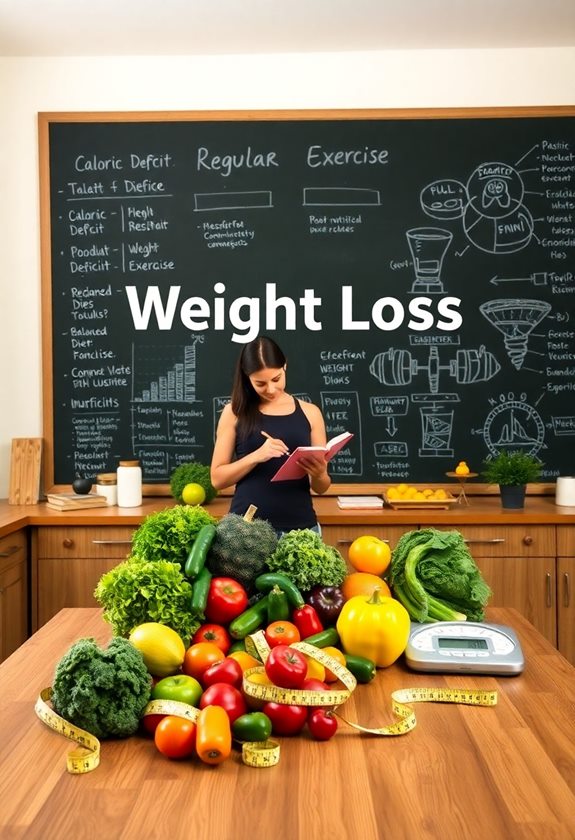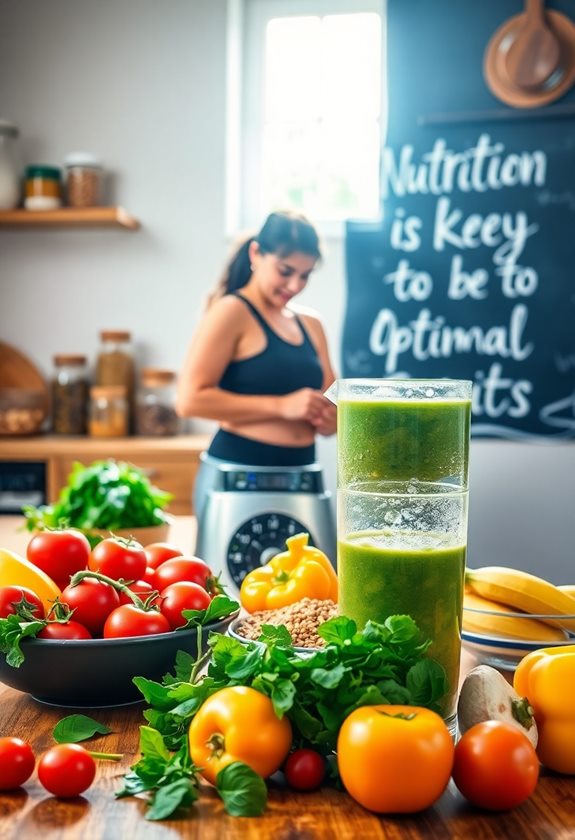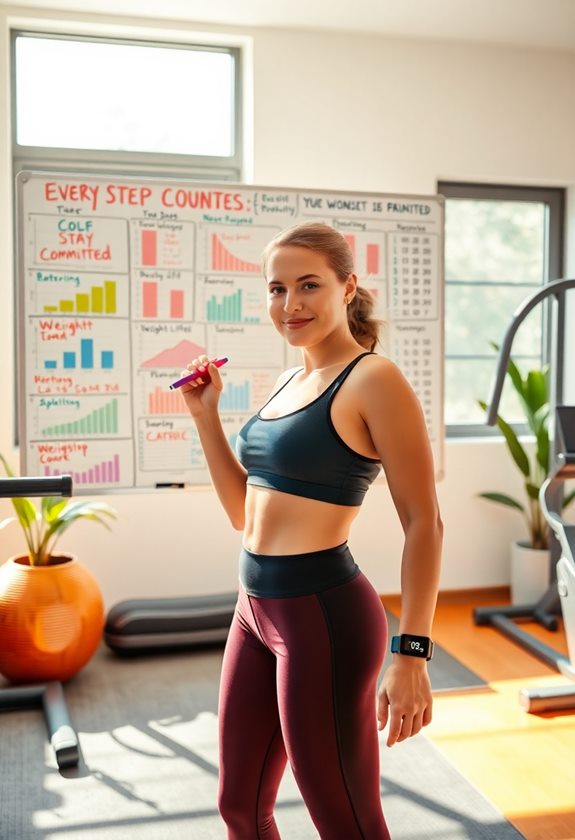Weight loss and fitness aren't just about hitting the gym. It starts with smart eating—balancing fruits, veggies, and lean proteins in your meals. Have you tried planning your meals? This can help you keep your portions in check and feel satisfied, not sluggish! 🌟 Combine this with fun exercises you enjoy, like walking or dancing, to keep moving. Remember, hydration is key—water helps you feel full too! If you track your progress, even small wins can keep you motivated. 🎉 So, are you ready to make simple changes for a healthier you? There's plenty more to explore!
Key Takeaways
- Balance calorie intake and expenditure to achieve effective weight loss; meal planning aids in managing this balance.
- Incorporate a mix of cardio and strength training for optimal fitness results while setting realistic and consistent exercise goals.
- Focus on whole foods and avoid skipping meals to maintain energy and prevent overeating later in the day.
- Practice mindful eating and portion control, using smaller plates to enhance satisfaction and prevent excessive intake.
- Track progress through journals or apps to maintain motivation, celebrate small goals, and visually document changes over time.
Understanding Weight Loss Basics

When it comes to weight loss, understanding the basics is essential for achieving your goals. You might wonder, "What really matters in losing weight?" The answer lies in two main factors: calories in versus calories out. Simply put, if you consume more calories than you burn, you won't lose weight. It's like trying to fill a bucket that has holes; the more you pour in, the more spills out!
Incorporating meal planning strategies can greatly enhance your ability to manage calorie intake effectively. To get started, focus on eating a balanced diet rich in fruits, veggies, whole grains, and lean proteins. Have you ever noticed how good you feel after a healthy meal? That's your body thanking you! You'll find that drinking plenty of water helps, too. It keeps you full and energized.
Another key point is portion control. Have you ever eaten a large meal only to feel sluggish afterward? Smaller portions can help you avoid that feeling.
Effective Exercise Strategies
Maximizing your weight loss efforts requires a solid exercise strategy. You can't just jump into any workout; it's essential to find what works best for you. Have you thought about mixing different types of exercises? Combining cardio with strength training can give you the best results. Cardio helps burn calories, while strength training builds muscle, which boosts your metabolism. Additionally, consider integrating synergy of meal planning with your fitness routine for a more thorough approach to weight loss.
Start by setting realistic goals. Think about what you want to achieve in a month or two. Can you commit to exercising three to five times a week? It's all about consistency!
Don't forget to listen to your body. If you feel tired or sore, it's okay to take a day off. You might also want to try fun activities like dancing or hiking. Enjoying your workouts makes it easier to stick with them.
Lastly, track your progress. Keep a journal or use an app to note your workouts and how you feel. This can motivate you and help you see improvements over time. Remember, every little step counts toward your weight loss journey! So, what exercise will you try today?
Nutrition for Optimal Results

Nutrition for Ideal Results
Exercise alone won't get you the results you want; nutrition plays a pivotal role in your weight loss journey. Have you ever noticed that no matter how hard you work out, the scale doesn't budge? That's because what you eat matters just as much, if not more. To make meal planning easier, consider using effective meal planning tools that can help you stay organized and focused on your dietary goals.
To kickstart your success, focus on whole foods. Think fruits, vegetables, lean proteins, and whole grains. These foods fuel your body better than processed options. When you choose the right foods, you'll feel more energized and satisfied. Isn't that what we all want?
Next, don't skip meals. Skipping meals can lead to overeating later. Instead, aim for balanced meals throughout the day. Try to include a mix of protein, healthy fats, and carbs.
Also, pay attention to portion sizes. It's easy to overeat, especially with snacks. Use smaller plates to help control portions.
Building Sustainable Habits
Building sustainable habits is essential for long-term success in your weight loss journey. You've probably tried quick fixes before, but they rarely last. So, how can you create habits that stick? It's about making small, manageable changes. Start with one or two new habits instead of overhauling your entire routine.
Here's a simple table to help you think about what habits to focus on:
| Habit | Action |
|---|---|
| Drink Water | Replace soda with water daily |
| Daily Movement | Walk for 10 minutes each day |
| Balanced Meals | Include veggies in every meal |
| Mindful Eating | Slow down and savor each bite |
These habits don't have to be hard. For example, drinking water instead of soda can make a big difference! Have you noticed how much better you feel with just a little more movement in your day? Remember, it's not about perfection; it's about progress. Celebrate small wins and stay patient with yourself. You're building a healthier future, one step at a time! 🌟
Tracking Progress and Staying Motivated

As you establish those sustainable habits, tracking your progress becomes a game changer in your weight loss journey. It helps you see how far you've come and keeps you motivated. Have you ever felt unsure if your efforts are paying off? By keeping track, you'll gain confidence and clarity.
Here are some practical ways to track your progress:
- Keep a Journal: Write down your meals, workouts, and feelings. This helps you spot patterns and stay on track.
- Use Apps: There are many apps designed to help you log food and exercise. They make tracking easy and fun!
- Take Photos: Snap a picture of yourself every few weeks. Seeing changes visually can be very encouraging.
- Set Small Goals: Instead of just aiming for a big number, set smaller, achievable goals. Celebrate when you reach them! 🎉

